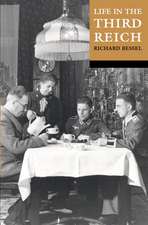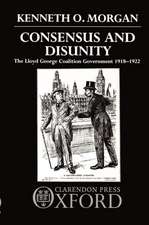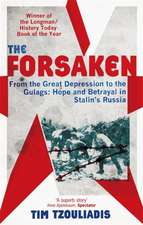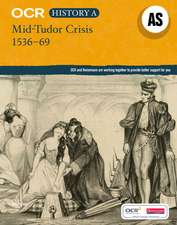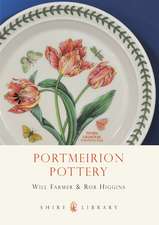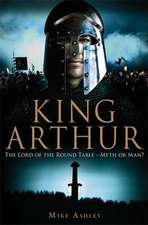Binding Passions: Tales of Magic, Marriage, and Power at the End of the Renaissance
Guido Ruggieroen Limba Engleză Paperback – 25 iul 1996
Preț: 312.78 lei
Preț vechi: 341.08 lei
-8% Nou
Puncte Express: 469
Preț estimativ în valută:
59.85€ • 62.66$ • 49.52£
59.85€ • 62.66$ • 49.52£
Carte tipărită la comandă
Livrare economică 25-31 martie
Preluare comenzi: 021 569.72.76
Specificații
ISBN-13: 9780195083200
ISBN-10: 0195083202
Pagini: 296
Dimensiuni: 156 x 234 x 21 mm
Greutate: 0.41 kg
Ediția:Revised
Editura: Oxford University Press
Colecția OUP USA
Locul publicării:New York, United States
ISBN-10: 0195083202
Pagini: 296
Dimensiuni: 156 x 234 x 21 mm
Greutate: 0.41 kg
Ediția:Revised
Editura: Oxford University Press
Colecția OUP USA
Locul publicării:New York, United States
Recenzii
"These tales introduce historians to a fascinating cast of characters, and historians of sexuality can find much of interest here."--Journal of the History of Sexuality
"Good tales abound in this book...tales of the magical binding of love and lust within and without marriage, often across boundaries of class and status."--Sixteenth Century Journal
"Ruggiero has interesting stories to tell. He draws out the implications of the stories without inflicting dreary theory on the reader. And he obviously knows his Venetian sources well."--American Historical Review
"This imaginative work on the history of marriage, magic, witchcraft, and sexuality in the Republic of Venice in the late-sixteenth century offers a fascinating glimpse into the world of the 'illicit' through a series of carefully constructed 'dossiers' of the Inquisition. Guido Ruggiero has written an important and provocative book; his approach is novel; and the result is sure to engage a broad range of readers."--John Martin, Trinity University
"A fascinating account of women, gender, magic, and love in sixteenth-century Italy. Beautifully written and thought-provoking."--Dr. Susan Wabuda, Fordham University
"An excellent piece of "microhistory" that offers some of the best insights we have into the role of magic in popular culture. First rate for students studying magic or witchcraft."--Steven Sargent, Union College
"Another stimulating and provocative study of the boundaries of behavior and belief in early modern Venice...This book will certainly be of interest not only to historians but also to literary scholars and art historians."--Rivista Di Studi Italiani
the way in which he uses the trials to demonstrate the multiplicity of standpoints from which any incident can be viewed is one of the strengths of his book
"Good tales abound in this book...tales of the magical binding of love and lust within and without marriage, often across boundaries of class and status."--Sixteenth Century Journal
"Ruggiero has interesting stories to tell. He draws out the implications of the stories without inflicting dreary theory on the reader. And he obviously knows his Venetian sources well."--American Historical Review
"This imaginative work on the history of marriage, magic, witchcraft, and sexuality in the Republic of Venice in the late-sixteenth century offers a fascinating glimpse into the world of the 'illicit' through a series of carefully constructed 'dossiers' of the Inquisition. Guido Ruggiero has written an important and provocative book; his approach is novel; and the result is sure to engage a broad range of readers."--John Martin, Trinity University
"A fascinating account of women, gender, magic, and love in sixteenth-century Italy. Beautifully written and thought-provoking."--Dr. Susan Wabuda, Fordham University
"An excellent piece of "microhistory" that offers some of the best insights we have into the role of magic in popular culture. First rate for students studying magic or witchcraft."--Steven Sargent, Union College
"Another stimulating and provocative study of the boundaries of behavior and belief in early modern Venice...This book will certainly be of interest not only to historians but also to literary scholars and art historians."--Rivista Di Studi Italiani
the way in which he uses the trials to demonstrate the multiplicity of standpoints from which any incident can be viewed is one of the strengths of his book

